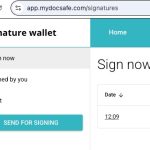How to get a brief you are happy with
Do you ever struggle to procure a brief from your clients that you are happy with? Or is the information you get often either incorrect or incomplete? Getting the right brief is the battle half won: you have all the information required to provide a quote you can stand behind and focus on delivery rather than worrying about profitability of the deal. The devil is in the detail: the best way of obtaining information about the client or the project depends on the industry or nature of engagement. There are many approaches that work, although some general principles are more or less universal (see the end of this article for a few pointers).
Here we would like to categorise the world of “brief creation” by the way it is billed: is it free to the client, or is it charged? If it is charged, is the price fixed or based on time spent? The reason why we believe this type of analysis can be insightful is because “who pays when” effects how much time and effort will the client devote to assembling required information upfront. Whatever system you use, I’m sure you have thought about these dimensions:
- is my client under undue time pressure to provide all required information?
- does the client even know the information required? If not, how long does it take to assemble? How many people from the organisation need to be involved?
- is the volume and nature of the information required easily structured into a logical workflow?
We will look at several scenarios we see often in our own practice and suggest the best approach we can offer that utilises MyDocSafe client portals, questionnaires, and workflows.
Billing for the brief
For the time spent
If getting the brief is part of billable work, you probably do not have much incentive to make it more efficient unless you quoted a fixed fee for the entire project. However, even if you can bill for ‘brief taking’, you know very well that the more time you spend on just taking the instruction
- the lower your client’s perceived overall value of your service
- the less time you have available to win other clients
- you send a signal that you are not in high demand, eroding your perceived reputation
- unintentionally, you rush the client to ‘dump everything’ on you (relevant or not), making the brief less rather than more precise. Rather than spending time on building rapport and having the capability of digging deeper you start working too early. The relationship becomes transactional rather than strategic and as such it is a big missed opportunity – the client will go elsewhere for the next project
Who falls into this category:
- Law firms
- Insolvency practices
Our recommendation
- Create a wizard in a client portal for each new instruction
- The wizard can include
- a logic-based questionnaire,
- space for longer answers,
- ability to upload documents
- ability to upload a link to a video recording summarising the instruction
- Structure the request as a workflow with 3-12 steps. Do not force the client to complete each step before the following step becomes available. Instead, leave that to the client – any step can be started and saved in any order. In this way they can gradually collect all the information required as it comes available.
- Tell the client that you will only start looking at the brief once the worklfow is completed.
Fixed fee billing
Some companies (including ourselves) charge a fixed free for producing a price quote for complex projects. It is a bit of a risk because some clients’ requirements are not only complex but also may not have been documented or even internally agreed, making the quoting exercise potentially a loss leader. Let’s be clear though: the purpose of introducing a fixed fee is not to generate a profit but to:
- discourage time wasters from taking up your valuable time
- communicate value that will be generated as part of quote building (it is not just a number but the overall approach to solving the problem, a workplan, recommendation on alternative solutions, potential project extensions etc.)
- show professionalism – the quote you give is a professionally written and structured document that leaves a paper trail that can impress your client now, or later. If you win the deal, the quote becomes an addendum to the contract which gives both sides a single point of truth of what the brief is, how it was understood, and what you agreed to deliver.
Who falls into this category:
- IT consultancies
- Software agencies
Our recommendation
- Create a project portal for each new instruction
- Request a written brief in a specific format including diagrams, personas, nice-to-haves versus must-haves, SLA requirements etc.
- Structure the request as a workflow with 4-6 steps. Force the client to complete each step before the following step becomes available. This will ensure that the client is not allowed to wander between steps, answering them in random order, or starts with the detail without spelling out high level purpose. On the flip side, each step needs to be short – no lengthy questionnaires, just simple and logical progression of the workflow.
Not Billing for brief taking
Let’s not joke ourselves. There is no such thing as free lunch, so the cost associated with the time spent collecting client information is ultimately cooked into overall fees, but in some industries it is not billed separately. There are two approaches here:
-
Client has the required information
Who falls into this category:
- Wealth managers
- Corporate finance and M&A butiques
- Larger consultancies
Our recommendation
- Create a customer registration portal
- Structure the request as a workflow with 4-12 steps. Force the client to complete each step before the following step becomes available. This will give you an opportunity to reconfigure the workflow on the fly based on choices made in previous steps. Note however, that designing this type of workflow is more complex because you are ultimately building a decision tree and need to ensure every path taken is intuitive, logical, shows appropriate documents and questions and is routed to an appropriate department.
-
Client does not have all required information.
This applies to situations where the director of a company simply does not know the quality of record keeping in the business or the volume of transactions
Who falls into this category:
- Accountancies
- bookkeepers
Our recommendation
- Create a customer registration portal
- The structure of the workflow can be similar to the one suggested above but the implications are different – no matter what the client says, the reality may be very different and will reveal itself only after the work begins. In this scenario, it might be necessary to adjust the price and sign an addendum to the agreement. To enable that the client needs to know beforehand that the initial price is an estimate and needs to be verified within a pre-agreed timeframe.
Getting the brief – general comments
Getting a client to write a good brief can be crucial for ensuring a successful project outcome. A clear and comprehensive brief helps you understand the client’s expectations, goals, and requirements, allowing you to deliver the desired results. Here are some tips to encourage your client to write a good brief:
- Educate the client: Explain the importance of a well-written brief in achieving their objectives. Help them understand that a detailed brief will provide you with the necessary information to deliver the desired outcome effectively.
- Provide a template or questionnaire: Offer a standardized template or a questionnaire that prompts the client to provide specific information. This can serve as a guide for them to cover essential aspects such as goals, target audience, budget, timeline, and any specific preferences they may have.
- Schedule a briefing meeting: Request a face-to-face or virtual meeting to discuss the project in detail. This allows you to ask questions directly and gain a deeper understanding of their requirements. Encourage open communication, and take notes during the meeting to refer back to later.
- Ask specific questions: If the client is struggling to provide specific details, ask targeted questions to elicit the necessary information. For example, inquire about their brand identity, competition, project scope, desired outcomes, and any existing materials they can provide.
- Provide examples or references: Share relevant examples or case studies that can help the client visualize what they want. This can inspire them and provide a clearer direction for their brief.
- Set clear expectations: Clearly communicate the purpose of the brief and what you expect to see included. Inform the client about the level of detail needed, including project scope, deliverables, target audience, and any specific guidelines you require.
- Offer guidance and support: Make yourself available to answer any questions or concerns the client may have while writing the brief. Provide assistance in organizing their thoughts, refining their ideas, and clarifying any confusion.
- Review and provide feedback: Once the client submits the brief, review it promptly and provide constructive feedback. Point out any areas that require further clarification or additional details. Collaborate with the client to refine the brief until it adequately represents their needs.
- To ensure a brief that is set in stone (cannot be easily changed after it is approved) make sure you ask the client to electronically sign the brief (whehter it is a word or a pdf or a questionnaire). Note that electronic signature is free to use by your clients.
Remember, effective communication is key throughout the process. By establishing a collaborative and supportive relationship with your client, you can encourage them to write a good brief that lays a strong foundation for a successful project.
Further reading
For best client portal examples, take a look at this article.
Whan to know what exactly is a client portal?


